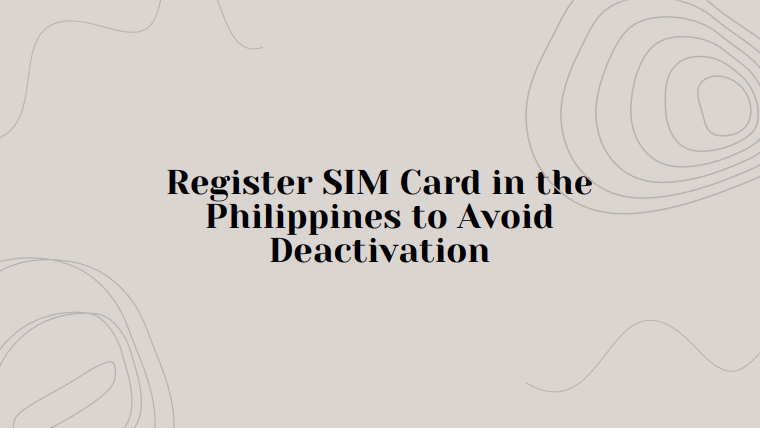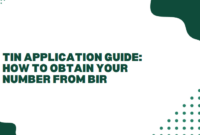Register SIM card is crucial to ensuring uninterrupted mobile service in the Philippines. With the implementation of the SIM Card Registration Act, all mobile users, including prepaid and postpaid subscribers, are required to register their SIM cards to prevent deactivation. This move not only strengthens efforts to combat mobile fraud but also enhances security for all users. The process applies to everyone, including foreigners, and is mandatory for both new and existing SIM cards.
Failing to register your SIM card can lead to significant inconveniences, such as losing access to essential services like calls, texts, and data. Without a registered SIM, you may miss out on one-time passwords (OTPs), which are necessary for online banking and other important transactions. To avoid these disruptions and protect your personal information, it’s essential to complete your SIM registration before the deadline.

If you own a mobile phone with a prepaid or postpaid SIM card, you’re likely familiar with the constant stream of scam messages. Fortunately, the introduction of the SIM card registration law in the Philippines aims to significantly reduce these unwanted messages, helping to prevent online fraud and other criminal activities.
SIM card registration in the Philippines is approaching its deadline. If you haven’t registered yet, here’s a simple guide to completing your SIM card registration.
What is SIM Card Registration in the Philippines?
Goldpriceph.com – The SIM Card Registration Act mandates that all SIM card users in the Philippines, including both individuals and corporate entities, register their SIM cards. This law is designed to link the user’s personal information to the SIM card, ensuring that it is directly traceable to the registered owner. This measure aims to increase accountability and help in the prevention of fraudulent activities.
The registration process applies to both physical SIM cards and embedded SIMs (eSIMs). Regardless of the type of SIM used, every SIM must be registered in compliance with this law. By registering, users provide key details such as their name, address, and other identification information, which are then associated with their SIM card.
In addition to existing SIMs, newly purchased SIM cards must also follow this regulation. A new SIM cannot be activated until it has been properly registered, ensuring that all mobile numbers in the country are linked to a verified identity.
Why is SIM Card Registration Mandatory?
The main objective of SIM card registration is to reduce cybercrimes and safeguard consumers from fraudulent activities. In the past, criminals could easily obtain unregistered SIM cards, making it challenging for authorities to trace their actions. Now, with the implementation of SIM registration, all SIM cards sold by telecom providers and authorized retailers must be registered before they can be activated.
To protect users’ privacy, the law ensures that any personal data gathered during the registration process will remain confidential. This measure is designed to maintain the security of individuals’ information while enhancing overall safety against potential misuse of SIM cards.
What Happens If You Don’t Register?
Failure to register your SIM card by the deadline will result in deactivation. This means you won’t be able to make or receive calls, send or receive texts, or use data services. Any remaining balance on the SIM will also be forfeited.
Additionally, you won’t be able to receive important one-time passwords (OTPs) necessary for online banking and other services, making it challenging to access your accounts. An active mobile number is often required for credit card applications, loans, and other financial services.
Deadline for SIM Registration
The SIM card registration deadline has been extended, offering users additional time to fulfill the requirement. It’s strongly advised to complete the registration process before the final deadline to prevent the risk of your SIM card being deactivated, ensuring continued access to essential mobile services.
How to Register Your SIM Card in the Philippines
You can conveniently register your SIM card online through your mobile provider’s registration platform. Here’s a general guide for the main service providers:
Globe or TM
- Visit the SIM registration page.
- Enter your mobile number.
- Input the one-time password (OTP) sent to your number.
- Complete the online form with your personal details, including name, address, and ID number.
- Upload a selfie and a valid ID.
- Keep a copy of your registration reference number.
Globe postpaid and LTE@Home subscribers can confirm registration through a simple text message.
Smart or TNT
- Go to the SIM registration site.
- Enter your mobile number and accept the terms.
- Input the OTP.
- Fill out your profile and submit a valid ID.
- Save your control number for further verification.
Postpaid subscribers can confirm their registration via text.
DITO
New subscribers can begin the registration process immediately after inserting their SIM, while current users can easily complete their registration through the DITO app for a seamless experience.

Common Questions About SIM Card Registration
- Cost of a SIM card: Prices range from ₱29 to ₱49, with options for free data packages available at higher prices.
- SIM card expiration: SIMs expire after 90 days of inactivity if not reloaded.
- Accepted IDs: Valid government-issued IDs, such as passports and driver’s licenses, are required.
- Registering minors: A parent or legal guardian can register a SIM on behalf of a minor.
- Registering business SIMs: Authorized representatives should register corporate SIMs.
Registering multiple SIMs: You can register more than one SIM under your name. - Foreigners’ registration: Visitors can register their SIMs with requirements like passports and proof of address.
Conclusion
With the large number of SIM cards that need to be registered, it’s common to experience challenges when trying to access the registration portals. To avoid delays or issues, consider completing your registration during off-peak hours when traffic is lighter. This can help you have a smoother and quicker process without the frustration of long waits or technical glitches.
Additionally, it’s crucial to use only the official platforms provided by your mobile service provider for registering your SIM card. This ensures that your personal information remains secure and protected from potential scams or fraud. Taking these simple steps will make the registration process easier and safer.





